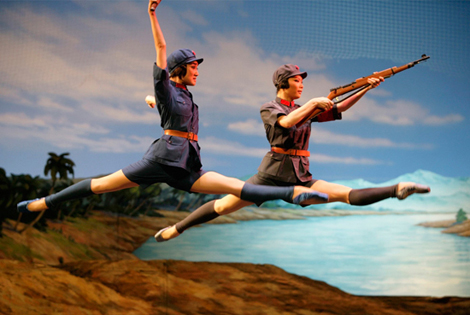There is concern about the state of arts funding in D.C., including the potential for a tax on live performance. Policy-makers must find money to preserve social services, and it’s reasonable to be concerned. The arts are frequently pitted against social services in funding battles. However, due to regular and informed advocacy over the last 48 months, it seems likely that the arts will not be cut further.
The Safety Net for the District’s most needy was a major issue in last year’s budget deliberations, and it remains a major concern this year. The budget fight happening in the District is mirrored in similar fights across the country. The Americans for the Arts are tracking budget debates nationwide, and they recently shared an article which noted,
“Children’s welfare supporters faced off against art advocates in Sacramento because of a proposal to spend a half million dollars on new exhibits at the future Crocker Art Museum…. ‘We’re in a crisis. We’re in a situation where kids are going to die,’ child advocate Bob Wilson said.”
That terrible crisis occurring within California’s budget battle highlights two things: that the most important social service politicians can provide – long term – is sound fiscal policy; and that the biggest mistake arts advocates can make right now is to turn a blind eye to the most needy. Arts advocates must speak out to preserve arts education, arts investment, and public art. But we should also be fighting for affordable housing, meals for the homeless, and education. Because we are in a down economy, it is critical that arts advocates take the time to inform themselves, and participate in these discussions intelligently. As Senator Daniel Patrick Moynihan said, “We’re each entitled to our own set of opinions, not our own set of facts.”
The proposed FY 11 budget includes a 10% cut for the arts this year, which is in line with general reductions in development spending. Due to no fault of their own, many city Safety Net programs have been decimated by the economic decline, including, as an example, low income housing. The Housing Trust Fund, which supported affordable housing for the most needy in the District, had grown over the last decade based on a dedicated appropriation allocating15 percent of deed recordation and transfer taxes (from sale of real estate) to the fund. But when the market crashed, and people stopped buying homes, the fund also crashed, and money for low-income housing projects disappeared.
Policy-makers have to find new revenue streams because money for existing programs has disappeared. Last year, the council took a number of steps, including: DC’s general sales tax rate was increased from 5.75 percent to 6 percent; The Cigarette tax was raised from $2 per pack to $2.50; The Gasoline tax was raised from 20 cents per gallon to 23.5 cents, matching the rate in Maryland, and revenues from the tax were moved from DC’s highway trust fund to the city’s general fund. With all of the things they did do last year, there were a number of things that they considered, and did not do. One example is a tax on live theater performances.
In some ways, a ticket tax would make sense. Last year, Ed Lazere, Director of the DC Fiscal Policy Institute, wrote a post in Greater Greater Washington, suggesting that the city should impose a theater ticket tax. He noted, “If you go to an event at the Verizon Center or a Nationals game, the ticket sales tax is 10 percent. Movie tickets are taxed at the basic rate of 5.75 percent. But people who buy tickets to theater performances — plays, musicals, opera, dance, etc. — don’t pay any sales tax at all.” Ed was one of the people responsible for securing the housing trust fund appropriation mentioned earlier, and is a respected voice in public policy considerations.
When the DC Advocates for the Arts visited with Councilmember Kwame Brown last year protesting arts funding cuts, his staff discussed the possibility of a dedicated tax for the arts generated from a ticket tax. Before the bill could even be introduced, however, arts businesses, already completely strapped by the down economy, were successful in convincing policy-makers that the proposal would actually reduce total revenues. (A tax would effectively make ticket prices more expensive, and this could affect number of tickets sold.) This year, again, council members want to raise revenue so that they can save programs. So again this year, a lot of ideas are being floated, including the same theater tax idea. Given that it’s election season, it’s unlikely that arts interests will be completely ignored to raise a small amount of tax revenue. The DC Advocates for the Arts will keep you informed as the budget debates proceed, and we hope that you will participate to whatever extent you are able.

